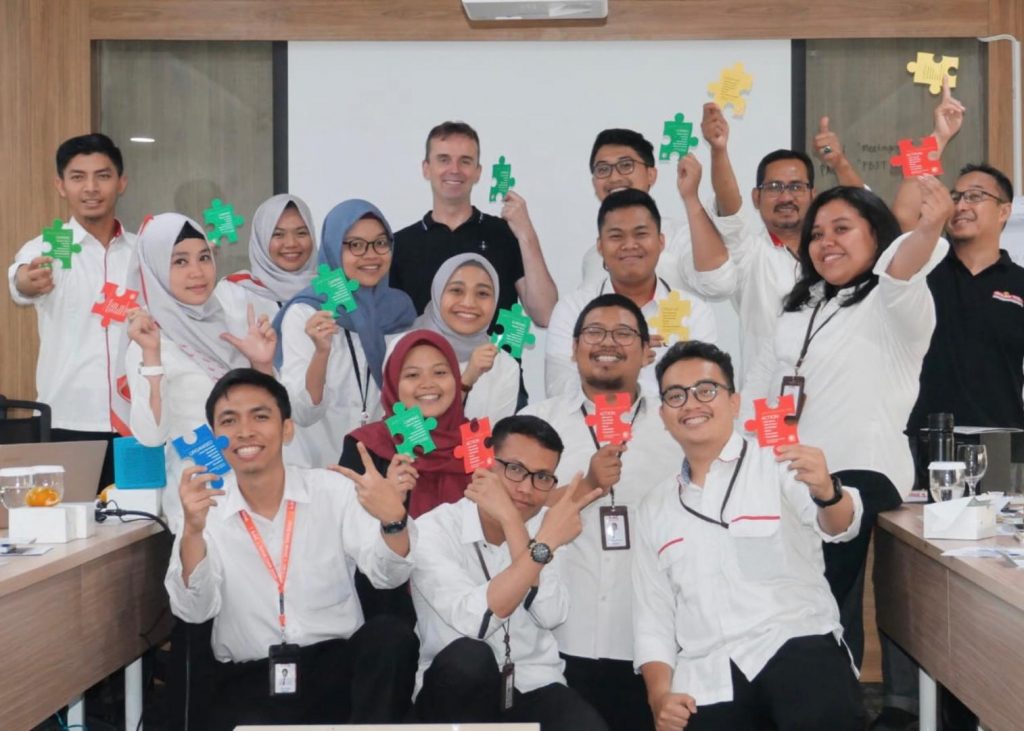Effective Team Leading in 2022

As a leader, do you just see your team as one big mass?
Some managers and leaders do. And, at times, to quantify goals and to keep an objective view of how everything is moving forward, it’s appropriate to see your team as a collective.
On a day-to-day basis, however, this isn’t so helpful.
Yes, it’s quicker to treat your team as a single entity when you’re pushed for time, but if this is continually the case, you need more support or more team members. Effective team-leading enables a team to adapt and learn, adjust to new goals, and is allowed the space to try new things. Innovation is linked to business growth…as Einstein is attributed to saying, ‘Insanity is doing the same thing over and over again and expecting different results.’
Your team should be like a high-performance sports car, moving effortlessly from A to B. Some teams, however, are more like a clown’s jalopy, creaking and groaning along every mile, with the fear that it might collapse at any time! Like a car, your team is a sum of many moving parts. These are your people.
No two people are the same in any walk of life, on any street in the world—so why would you think everyone’s the same just because they’re under your company’s roof? Identical twins may present some correlations in both appearance and personality, but even they have distinct differences, their own opinions and specific likes and dislikes.
To be an effective team leader you need to personalise your approach
To be an effective team leader, you need to personalise your approach to every member. What motivates Jane may not do squat for Joe. The skills Emma enjoys are lost on Edwin, who has his own stand-out attributes that could help bring the team closer to its goals. David is more of a ‘carrot person’, i.e., he presents his best work when praised and valued. Yet compliments and rewards do nothing for Davina, who responds more to the ‘stick’…deep down, she fears losing her job and needs firm boundaries and a lot of steering to get the best out of her.
Those six people are, of course, fictitious, but my point is that your team members, individually, will have any number of motivators and aversions. You’d fine-tune your sports car’s engine—finding out more about the nuances, behaviours, preferences, beliefs, ambitions, non-negotiables, approaches, attitudes, habits, morals, knowledge and experiences of each individual in your team will enhance its effectiveness.

Another common mistake of leaders is to micro-manage their team members. By all means, be as invested in these wonderful people as you like, but they won’t give their best if they feel stifled. If they feel that you don’t trust them, their output won’t be linked to innovation and success but that they simply going through the motions for fear of them being pulled into your office for a dressing down. There have been rafts of studies that prove that affording your employees autonomy, freedom, self-accountability and trust leads to new opportunities and development, to success and true collaboration, to a positive impact on the company’s bottom line.
Autonomous employees are more committed
As well as higher productivity, trusted, autonomous employees are more committed to the companies they work for and they’re also happier in their roles. Micro-managing has never been an effective management style and it baffles me why it’s not stamped upon more when you learn of the negative effects it brings.
Examples of autonomy include:
- Allowing team members to organise their time according to the needs of the business and their workload (concerning both individual tasks and team tasks, and leaving them free to communicate and collaborate with their colleagues when they see fit)
- Not jumping to conclusions or making assumptions in any scenario, but looking at an issue from the team member’s perspective to form a thorough understanding of the whole story
- Collaborating, not dictating
- Inviting ideas and giving credit where it’s due
- Supporting the development of all team members, even if this means them leaving the team at some point in the future to further their career
- Understanding that people have other things going off in their lives; remembering that different individuals will be more/less productive at different times as a result; realising that it’s unlikely that everyone will feel passionate, excited and enthusiastic every moment of every day
- Affording them control over their tasks, workload, hours worked, etc.
- Not breaking into a sweat if people ask to work from home, but adapting your management style and reporting processes to accommodate their request
- Focusing on your team’s output rather than on presenteeism, and communicating this approach effectively to your team
Seeing your team as a collective and also as individuals will help you when it comes to recruitment. Understanding which skills your team needs as a whole is one thing, but also understanding how the candidate in front of you may work with the individuals in your team is incredibly helpful and can prevent poor hiring decisions…though we do get that it’s difficult to see the ‘true, warts and all’ person in an interview scenario when the individual will undoubtedly be focused on presenting their best self

We simply can’t use the management styles of the 1970s in 2022
The world has moved on since then. The pandemic has brought its own changes to workplace culture and working practices, which means another shift by leaders and managers to get the best from their teams.
It’s doable. It’s more than doable. In fact, the companies that have listened to their teams throughout the pandemic and put their people at the centre of everything they do, are doing far better than their competitors who are still doing what they were doing ten, twenty, thirty years ago. The ones dragging their feet to effectively lead the teams of 2022 are the ones currently struggling to recruit staff.
To delve into the individual personalities of your team won’t take months of observation; there are various tools that can help you recognise patterns of behaviour and understand common motivators and that’s where the team at Jigsaw and the Jigsaw Discovery Tool can help. This deeper understanding you absolutely need as a leader of today is actually quite easy to attain.
Book a free consultation
For more information, contact us on 01924 898930 or email hello@jigsawdiscoverytool.com





[…] deliver a good standard of service, and your reputation, as well as your bank balance, will suffer. Your managers should serve the people they lead, as well as focus on moving the business forward in other ways. A culture of ‘us’ and ‘them’ […]
[…] leadership skills and abilities has never been more important than it is today. Leaders need to be able to adapt their style and make meaningful relationships with colleagues, clients and stakeholders from diverse […]